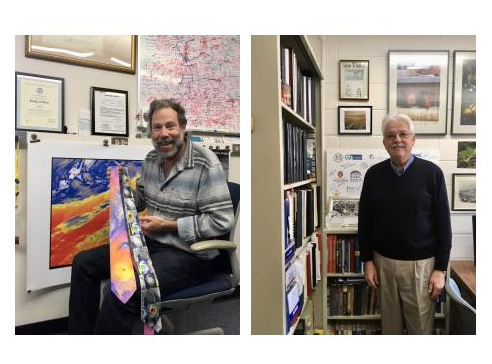
[ Archive ]

 |
CIMSS-NOAA Weekly Report [ Archive ] |
 |
ASPB AND CIMSS WEEKLY HIGHLIGHTS FOR THE WEEK ENDING JANUARY 31, 2020
IN THE PRESS:
SSEC and CIMSS Scientists in the News: Scientists at the University of Wisconsin-Madison (UW) Space Science and Engineering Center (SSEC) and the Cooperative Institute for Meteorological Satellite Studies (CIMSS) provide expert commentary, interviews, and imagery to news media and participate in events to promote science. In the news this week: 1) ASPB scientist Tim Schmit and SSEC Senior Scientist Paul Menzel (former chief scientist of NOAA STAR) shared their stories in oral history interviews as part of NOAA's 50th Anniversary celebration. (https://go.wisc.edu/heh953, https://voices.nmfs.noaa.gov/w-paul-menzel). 2) The Wisconsin State Journal highlighted winter trends in Wisconsin in a story based on an interview with Jordan Gerth, CIMSS honorary fellow. (https://go.wisc.edu/ctdcqn) 3) CIMSS Satellite Blog contributor Scott Bachmeier published posts on "Interesting circular contrail over South Dakota" (Jan. 29) and "Stratospheric smoke from Australian bushfires" (Jan. 24). Read more at the CIMSS Satellite Blog (https://cimss.ssec.wisc.edu/satellite-blog/). (T. Schmit, E/RA2, 608-263-0291, tim.j.schmit@noaa.gov, P. Menzel, CIMSS, J. Gerth, S. Bachmeier, CIMSS, J. Phillips, SSEC, 608-262-8164)
 (Click image to enlarge)
(Click image to enlarge)
Figure: GOES-16 near-infrared, "Cirrus" images, Jan. 19-24, 2019, showed a semi-circular pall of smoke that originated from Australian bush fires. Outbreaks of pyrocumulonimbus clouds that formed in late Dec. 2019 and early Jan. 2020 injected smoke into the lower stratosphere that drifted eastward across the South Pacific Ocean. Credit: CIMSS.
 (Click image to enlarge)
(Click image to enlarge)
Figure: ASPB Scientist Tim Schmit and SSEC Senior Scientist Paul Menzel sat for oral history interviews as part of NOAA's 50th Anniversary celebration. Credit: NOAA.
ITEMS FOR THE ADMINISTRATOR:
ITEMS FOR THE ASSISTANT ADMINISTRATOR:
ITEMS FOR THE OFFICE DIRECTOR, STAR:
ITEMS FOR THE DIVISION CHIEF, CoRP:
VISIT MCV Training Module updated, and recorded YouTube version created: Cooperative Institute for Meteorological Satellite Studies (CIMSS) Trainers Scott Bachmeier and Scott Lindstrom have updated the Virtual Institute for Satellite Integration Training (VISIT) Module on Mesoscale Convectively-generated Vortex (MCVs) features. MCVs are warm-season convective systems that can affect the forecast decision process because their development and evolution are sometimes poorly handled in forecast models. This Training module will be offered on the VISIT Teletraining Calendar (http://rammb.cira.colostate.edu/training/visit/calendar.asp) in the warm season, and a recorded version is also available on YouTube (https://www.youtube.com/watch?v=p0_Co2Z1ddg). (S. Bachmeier, CIMSS; S. Lindstrom, CIMSS, 608 263 4425)
VISITORS:
NEXT WEEK:
LOOKING AHEAD:
| Archived Weeklies Page | Submit a report item |